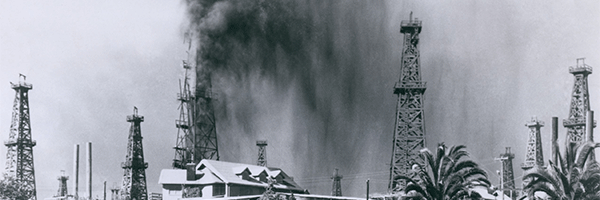The world’s No. 2 oil producer, Saudi Arabia, wants to cut oil production to raise oil prices. And has even actually curtailed production to meet that goal.
The world’s No. 3 oil producer, Russia, wants (others mostly) to cut oil production to raise prices. And has even promised to cut its own production. (We’ll believe that when we see it.)
But none of that matters because the world’s No. 1 oil producer, the United States, has put its foot to the accelerator and is producing at record volumes.
Until Houthi rebels began attacking random ships in the Red Sea recently, oil prices looked like they were headed to new lows with prices hitting a 5-month low last week. The Houthi attacks, which have sent oil tankers on the long trip around the Cape of Good Hope in Africa, has sufficiently disrupted supplies so that today, December 19, oil hit a two-week high. U.S. benchmark West Texas Intermediate closed up 1.34% to $73.44 a barrel and international benchmark Brent crude ended the day up 1.92% at $79.45.
Oil analysts don’t expect the rally to hold. The supply/demand dynamics are just too negative.
Drillers from the Permian Basin in West Texas to the Bakken Shale of North Dakota have increased oil production to record levels. Near the end of 2022, the U.S. government forecast domestic production would average 12.5 million barrels a day during the fourth quarter of 2023. That estimate has been moved up to 13.3 million barrels a day.
That’s the equivalent of adding a new oil producer of the size of Venezuela to global supply.
“The US clearly played a huge role in the global market in 2023, including pressuring OPEC+ to curtail their output,” Wood Mackenzie Ltd. analyst Ryan Duman told Bloomberg.
The surge in U.S. production is a huge surprise after a drop in the price of oil and the collapse of demand during the Covid pandemic led U.S. producers to curtail exploration an production and emphasize returning cash to shareholders. Among factors fueling the surge in U.S. production is new technology that has enabled U.S. producers to pump more oil even as the number of drilling rigs at work has fallen by about 20% this year.Annual growth in industry spending is projected to be just 2% in 2024, down from this year’s 19% growth rate and the record 44% increase of two years ago, according to Evercore ISI.
Now it’s OPEcC’s turn to see if it has the discipline to curtail production in the face of unfavorable supply/demand dynamics. The cartel recently agreed on a voluntary reduction of 1 million barrels a day in production, but lower production and lower oil prices are putting intense pressure on cartel producers such as Russia, Nigeria, and Algeria to ignore the agreement.
For those OPEC members, the chant may soon be “Produce, Baby, Produce.” and who cares what that does to the price of oil.


